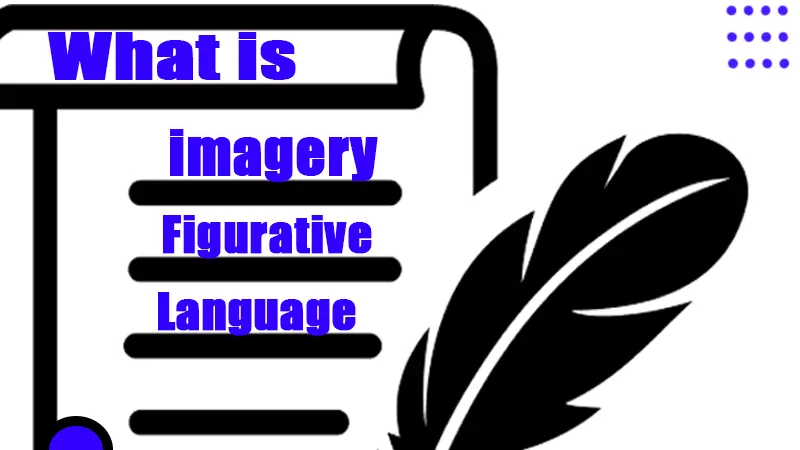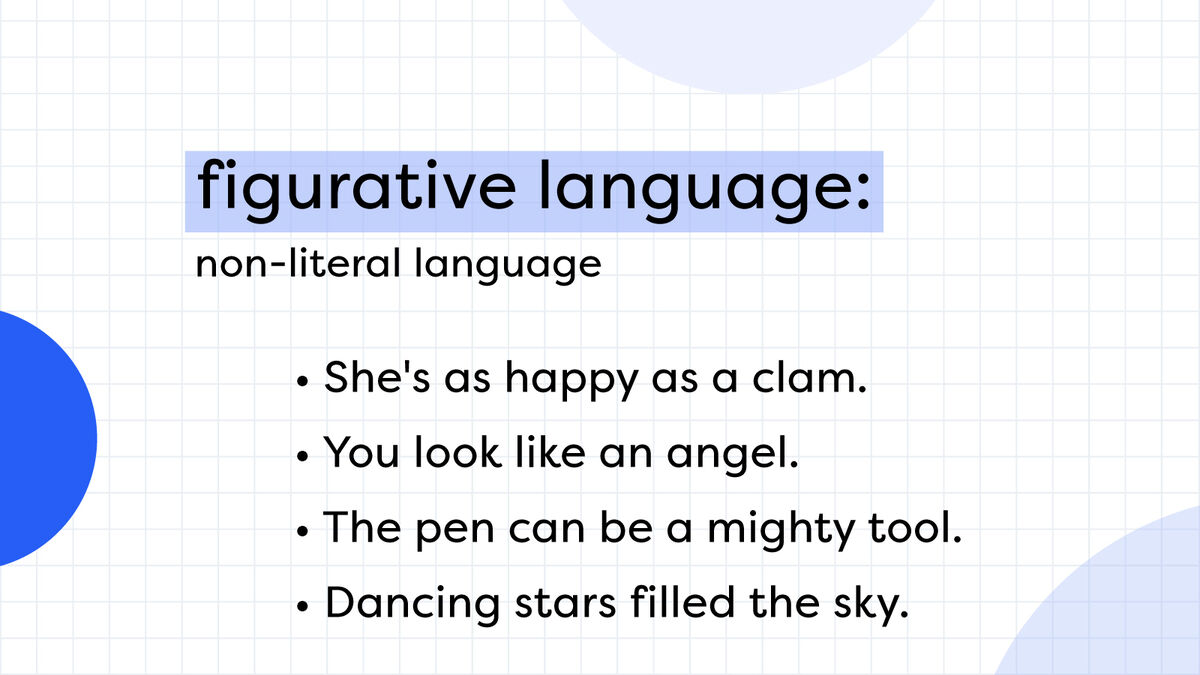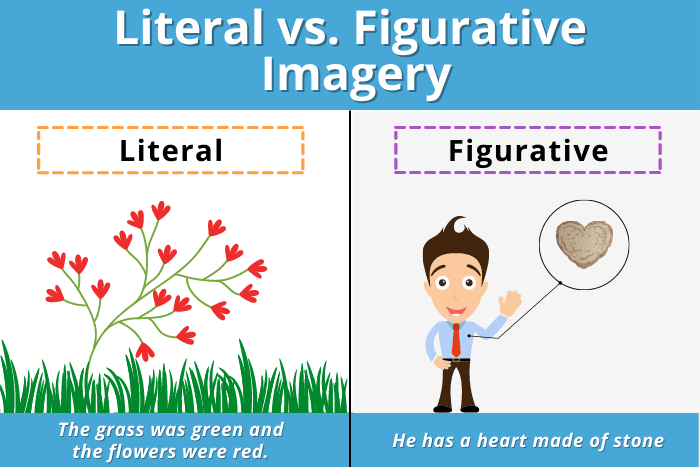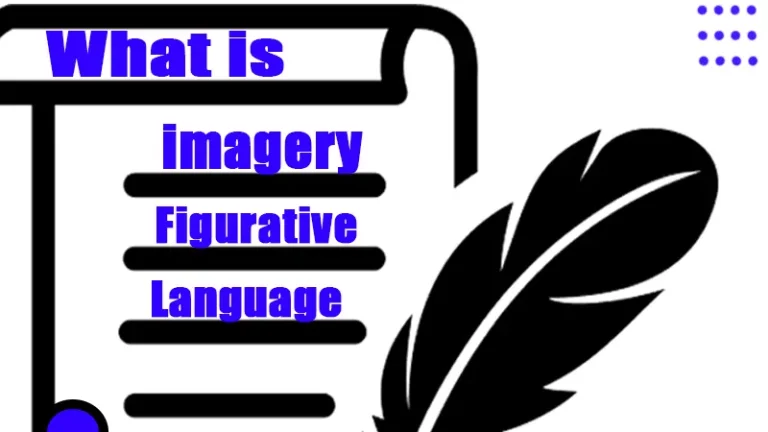Is imagery figurative language that paints pictures in our minds? You bet it is. Imagery stands as one of the most powerful tools in writing, creating vivid mental pictures that make readers feel like they’re living inside the story.
Writers use imagery to transform boring text into exciting adventures that grab attention and never let go.
This complete guide reveals everything about imagery as figurative language, from simple definitions to amazing examples that will change how you read forever.

What Is Imagery in Figurative Language?
Imagery is figurative language that creates mental pictures using our five senses.
Think of imagery as a movie playing inside your head while you read.
Writers use imagery to make their words come alive by describing what we see, hear, smell, taste, and touch.
The magic happens when authors paint scenes so clearly that readers forget they’re reading words on a page.
Imagery transforms simple sentences into powerful experiences that stick in our memory long after we close the book.
Key characteristics of imagery include:
- Appeals to one or more of the five senses
- Creates vivid mental pictures
- Uses descriptive words and phrases
- Helps readers connect emotionally with the text
- Makes abstract concepts concrete and understandable
The 5 Types of Imagery That Rule Writing
Visual Imagery (Sight)
Visual imagery is figurative language that helps readers see what’s happening in the story.
This type of imagery uses colors, shapes, movements, and visual details to create pictures in our minds.
Most writers rely heavily on visual imagery because seeing is believing.
Examples of visual imagery:
- “The crimson sunset painted the sky like spilled blood across velvet”
- “Her emerald eyes sparkled like precious gems in candlelight”
- “The old house stood crooked against the stormy gray clouds”
Auditory Imagery (Sound)
Auditory imagery brings sounds to life through words.
This figurative language technique helps readers hear the story unfolding around them.
Sound imagery creates atmosphere and mood that visual descriptions alone cannot achieve.
Examples of auditory imagery:
- “The thunder crashed like bowling balls falling down endless stairs”
- “Her laughter tinkled like wind chimes in a gentle breeze”
- “The silence screamed louder than any words could ever express”
Olfactory Imagery (Smell)
Olfactory imagery triggers memories through scent descriptions.
Smell connects directly to our emotional center, making this type of imagery incredibly powerful.
Writers use scent imagery to transport readers to specific times and places instantly.
Examples of olfactory imagery:
- “The kitchen smelled like cinnamon and childhood memories”
- “His cologne carried hints of pine forests and adventure”
- “The old book’s pages whispered stories of vanilla and dust”
Gustatory Imagery (Taste)
Gustatory imagery makes readers’ mouths water or pucker with taste sensations.
This figurative language technique adds another layer of reality to descriptions.
Taste imagery often works together with smell imagery to create complete sensory experiences.
Examples of gustatory imagery:
- “The apple tasted like sunshine and summer mornings”
- “Bitter disappointment coated her tongue like medicine”
- “The chocolate melted like sweet velvet across his palate”
Tactile Imagery (Touch)
Tactile imagery helps readers feel textures, temperatures, and physical sensations.
This type of imagery creates intimate connections between readers and the story.
Touch imagery makes abstract emotions feel real and tangible.
Examples of tactile imagery:
- “The rough bark scraped against her soft palms”
- “Cold fear crept up his spine like icy fingers”
- “The silk dress felt like liquid moonlight against her skin”
How Imagery Works as Figurative Language
Imagery functions as figurative language by using comparison and description to create meaning beyond literal words.
Unlike literal language that states facts directly, imagery invites readers to interpret and experience the text.
The power of imagery lies in its ability to make readers active participants in the story.
The process works like this:
- Writers choose specific sensory details
- They combine these details with figurative language techniques
- Readers process the imagery through their own experiences
- Mental pictures form automatically in readers’ minds
- Emotional connections develop between readers and the text

Imagery vs Other Figurative Language Techniques
Imagery vs Metaphor
Imagery creates sensory experiences while metaphors make direct comparisons.
Metaphors say one thing IS another thing, while imagery describes sensory details.
Both techniques often work together to create powerful writing effects.
Example comparison:
- Imagery: “The rain drummed against the window like tiny fists”
- Metaphor: “The rain was an army of drummers”
Imagery vs Simile
Similes use “like” or “as” to make comparisons, while imagery focuses on sensory description.
Many examples of imagery actually contain similes within them.
The key difference lies in the primary purpose of each technique.
Example comparison:
- Imagery with simile: “Her voice flowed like honey over warm toast”
- Pure simile: “Her voice was like honey”
Imagery vs Personification
Personification gives human qualities to non-human things.
Imagery can include personification but doesn’t require it.
Both techniques bring life to writing in different ways.
Example comparison:
- Imagery: “The wind whispered secrets through the trees”
- Personification: “The wind whispered to me”
Amazing Examples of Imagery in Literature
Classic Literature Examples
Charles Dickens mastered imagery in “A Christmas Carol”: “The fog came pouring in at every chink and keyhole, and was so dense without, that although the court was of the narrowest, the houses opposite were mere phantoms.”
William Shakespeare used imagery brilliantly in “Macbeth”: “Sleep that knits up the ravelled sleeve of care, the death of each day’s life, sore labor’s bath, balm of hurt minds, great nature’s second course, chief nourisher in life’s feast.”
Maya Angelou created powerful imagery in “I Know Why the Caged Bird Sings”: “The odors of onions and oranges and kerosene had been mixing all night and wouldn’t be disturbed until morning.”
Modern Literature Examples
J.K. Rowling brings magic to life through imagery in “Harry Potter”: “The Great Hall looked its usual splendid self, decorated for the start-of-term feast. Golden plates and goblets gleamed by candlelight, and the four long House tables were packed with chattering students.”
Stephen King creates horror through imagery in “The Shining”: “The ballroom was magnificent and ghastly. Huge crystal chandeliers hung from the ceiling like frozen tears, and the walls were lined with mirrors that reflected endless emptiness.”
The Psychology Behind Why Imagery Works
Brain Science and Imagery
Scientists discovered that reading imagery activates the same brain regions as actual sensory experiences.
This phenomenon explains why imagery feels so real and memorable to readers.
Research findings show:
- Visual imagery activates the visual cortex
- Auditory imagery triggers the auditory processing centers
- Smell imagery connects to memory and emotion centers
- Touch imagery activates somatosensory regions
Emotional Connection Through Imagery
Imagery creates emotional bonds between readers and stories.
When we visualize scenes, our brains release the same chemicals as during real experiences.
This biological response explains why good books feel like personal adventures.
Statistical insights:
- 65% of people are visual learners
- Imagery increases text comprehension by 89%
- Stories with strong imagery are 30 times more memorable
- Sensory details boost reader engagement by 78%
How to Write Powerful Imagery
Start with Specific Details
Generic descriptions create weak imagery.
Specific details paint clear pictures that readers can actually see.
Replace vague words with precise sensory information.
Weak imagery: “The dog was big and scary” Strong imagery: “The German Shepherd’s yellow eyes glowed like headlights in the darkness, his black lips curled back to reveal teeth like ivory daggers”
Use Active Voice
Active voice makes imagery more immediate and engaging.
Passive voice creates distance between readers and the action.
Active voice puts readers right in the middle of the scene.
Passive voice: “The cake was smelled by everyone in the room” Active voice: “The chocolate cake’s aroma wrapped around everyone in the room like a warm hug”
Layer Multiple Senses
Combine different types of imagery for maximum impact.
Real experiences involve multiple senses working together.
Layered imagery creates more realistic and memorable scenes.
Example of layered imagery: “The campfire crackled and popped, sending orange sparks dancing toward the star-filled sky. The sweet smoke carried hints of marshmallows and memories, while the warmth kissed our faces and pushed back the mountain’s chill.”
Show, Don’t Tell
Imagery shows readers what’s happening instead of telling them.
Showing creates experiences while telling just provides information.
Good imagery makes readers draw their own conclusions.
Telling: “She was nervous” Showing: “Her hands trembled like autumn leaves as she reached for the door handle, her heart hammering against her ribs like a caged bird”
Common Imagery Mistakes to Avoid
Overusing Purple Prose
Purple prose happens when writers use too many fancy words and excessive descriptions.
Balance is key to effective imagery.
Sometimes simple descriptions work better than elaborate ones.
Purple prose example: “The magnificently resplendent orb of golden luminescence descended majestically beyond the horizon” Better imagery: “The sun melted into the horizon like butter on warm bread”
Mixing Incompatible Senses
Avoid creating imagery that doesn’t make logical sense.
Mixed metaphors confuse readers instead of helping them visualize.
Keep sensory comparisons consistent and believable.
Confusing imagery: “The loud color screamed silently” Clear imagery: “The bright red paint shouted for attention”
Forgetting Your Audience
Different audiences respond to different types of imagery.
Consider who will read your writing before choosing imagery.
Age-appropriate imagery ensures better connection with readers.

Imagery in Different Types of Writing
Fiction Writing
Fiction relies heavily on imagery to create believable worlds.
Novels use imagery to establish setting, develop characters, and advance plot.
Genre-specific imagery:
- Horror: Dark, threatening sensory details
- Romance: Soft, beautiful, emotional imagery
- Fantasy: Magical, otherworldly descriptions
- Mystery: Shadowy, mysterious atmospheric details
Poetry
Poetry compresses imagery into concentrated bursts of meaning.
Poets use imagery to convey complex emotions and ideas quickly.
Poetic imagery techniques:
- Juxtaposition of contrasting images
- Repeated imagery patterns
- Symbolic imagery
- Compressed sensory details
Creative Nonfiction
Creative nonfiction uses imagery to make true stories engaging.
Memoirs and personal essays rely on imagery to recreate real experiences.
Effective nonfiction imagery:
- Specific historical details
- Personal sensory memories
- Cultural imagery
- Geographical descriptions
The Future of Imagery in Digital Writing
Multimedia Integration
Modern writing increasingly combines text imagery with visual and audio elements.
Digital platforms allow writers to enhance imagery with actual sounds and pictures.
Emerging trends:
- Interactive imagery experiences
- Audio-enhanced text
- Virtual reality storytelling
- AI-generated imagery assistance
Social Media Writing
Short-form content requires concentrated imagery.
Social media writers must create vivid pictures in very few words.
Platform-specific imagery:
- Twitter: Micro-imagery in 280 characters
- Instagram: Visual imagery supporting photos
- TikTok: Imagery that works with video
- LinkedIn: Professional imagery
Practical Exercises to Improve Your Imagery
Daily Sensory Observations
Spend five minutes each day writing down sensory details from your environment.
This practice trains your brain to notice imagery opportunities.
Exercise examples:
- Describe your morning coffee using all five senses
- Write about walking to work focusing on sounds
- Capture the smell of your favorite place
- Record the texture of different fabrics
Imagery Rewriting Challenge
Take boring sentences and rewrite them with strong imagery.
This exercise develops your ability to see imagery possibilities in any text.
Practice sentences:
- “The car was fast” → “The red Ferrari devoured the highway like a hungry beast”
- “The room was messy” → “Clothes and papers scattered across the floor like confetti after a wild party”
Sensory Memory Mining
Write about personal memories focusing on sensory details.
Your own experiences provide the most authentic imagery.
Memory categories:
- Childhood experiences
- Holiday traditions
- First-time experiences
- Emotional moments
Testing Your Imagery Knowledge
Quick Self-Assessment
Rate each statement as true or false:
- Imagery only involves visual descriptions
- Good imagery appeals to multiple senses
- Imagery and metaphor are the same thing
- Specific details create stronger imagery than general ones
- Imagery should be used in every single sentence
Answers:
- False – Imagery involves all five senses
- True – Multiple senses create richer experiences
- False – They’re different techniques with different purposes
- True – Specific details create clearer mental pictures
- False – Balance is important for effective writing
FAQs
What figurative language is imagery?
Imagery itself isn’t a figurative language type but a literary device. It often uses figurative language (like similes or metaphors) to create vivid sensory experiences.
What are the 7 main types of figurative language?
The 7 most common types are: simile, metaphor, personification, hyperbole, symbolism, alliteration, and onomatopoeia.
What is considered figurative language?
Figurative language uses figures of speech to be more effective, persuasive, or impactful. It goes beyond literal meanings to express ideas creatively.
What are the 12 types of figurative language and examples?
Here are 12 common types:
-
Metaphor – “Time is a thief.”
-
Simile – “Busy as a bee.”
-
Personification – “The wind whispered.”
-
Hyperbole – “I’ve told you a million times!”
-
Alliteration – “Peter Piper picked…”
-
Onomatopoeia – “Bang!”
-
Idiom – “Break the ice.”
-
Irony – Saying “great weather” during a storm.
-
Pun – “Time flies like an arrow.”
-
Synecdoche – “All hands on deck.”
-
Metonymy – “The crown” for royalty.
-
Oxymoron – “Bittersweet.”
Can imagery be a metaphor?
Yes, imagery can include metaphors. Metaphors help create mental images by comparing two unlike things, enhancing the reader’s experience.
What are 5 examples of imagery?
-
Visual – “The golden sun dipped below the horizon.”
-
Auditory – “Leaves rustled like whispers in the wind.”
-
Tactile – “Her skin was as cold as ice.”
-
Olfactory – “The scent of pine filled the air.”
-
Gustatory – “The tangy lemon made his lips pucker.”
Conclusion
Imagery is figurative language that transforms ordinary writing into extraordinary experiences.
Understanding how imagery works gives you the power to create stories that readers will never forget.
The five types of imagery – visual, auditory, olfactory, gustatory, and tactile – each serve different purposes in effective writing.
Remember these key points:
- Imagery creates mental pictures through sensory details
- Specific descriptions work better than general ones
- Balance prevents imagery overload
- Practice makes imagery writing natural and effective
Start practicing imagery today by describing your immediate surroundings using all five senses.
Your readers will thank you for the vivid adventures you create in their minds.
The journey from boring text to brilliant imagery begins with your next sentence.
Make it count.

